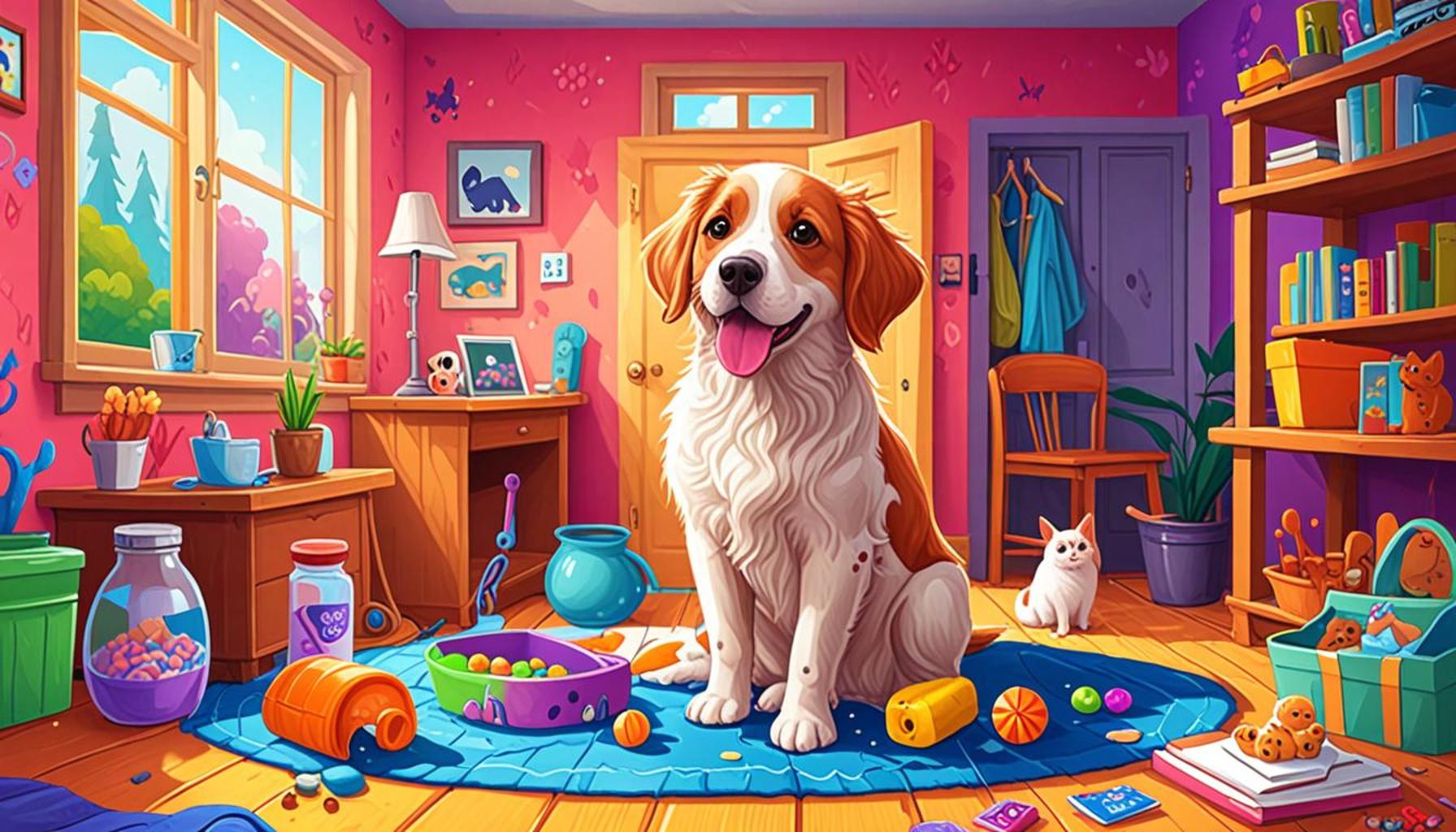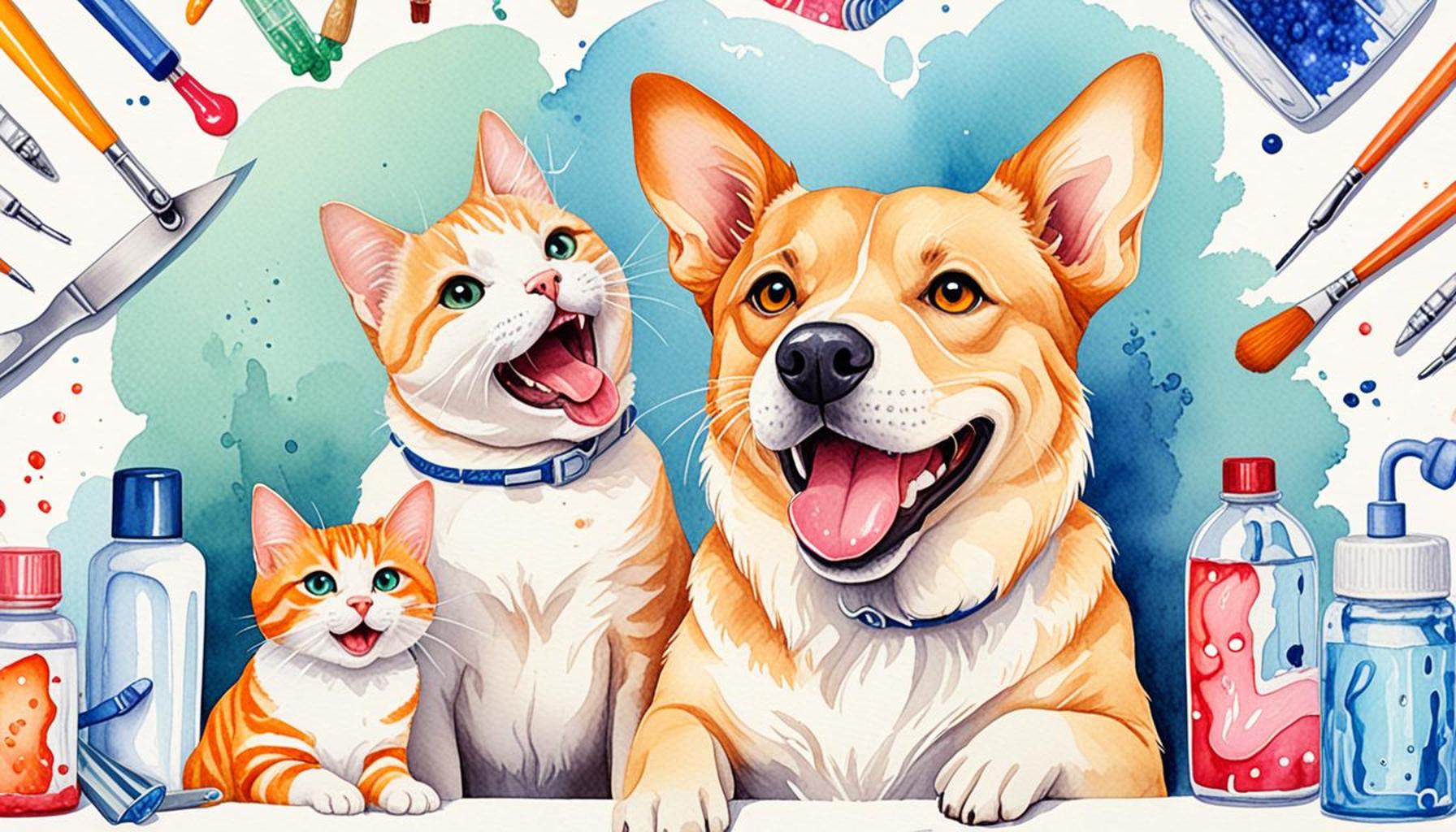How to Set Up a Safe Environment for Welcoming a New Pet

Bringing a new pet into your home is an exhilarating experience, brimming with joy and companionship. However, making your living space truly ready for a new furry friend requires thoughtful preparation to ensure their safety. A secure environment not only protects your pet but also safeguards your household items and ensures the safety of your family members.
Key Considerations for a Safe Pet Environment
Creating a welcoming space involves focusing on several critical aspects that allow your pet to thrive while minimizing potential hazards.
- Identify Hazards: Before welcoming your new pet, take a thorough tour of your home. Look for choking hazards such as small objects that can be swallowed, like coins or buttons. Additionally, be mindful of toxic plants such as lilies or sago palms, which can be harmful or even fatal to pets. It’s also wise to remove valuable or delicate items from the reach of curious paws that could lead to accidents or damage.
- Designate Space: Setting aside a specific area as your pet’s sanctuary is essential for creating a sense of belonging. This space should include a comfortable bed, food and water dishes, and essential toys that stimulate their mind. Having a designated area helps your pet feel secure and establishes a routine. For example, consider using a cozy corner in your living room or a quiet space in your home office.
- Pet-proof Your Home: Use gates to restrict access to high-risk areas, such as staircases or kitchens, where dangerous items might be present. Installing covers on furniture and using barriers can also prevent destructive behavior. For instance, you might want to keep electrical cords hidden away with protective wraps to prevent chewing—a common behavior especially in puppies.
Emotional Safety for Your New Companion
Beyond physical changes, emotional safety is equally vital for your new pet’s well-being. Helping them feel secure and comfortable involves several key strategies.
- Gradual Introduction: When bringing home a new pet, allow them to explore their environment slowly. Rather than overwhelming them with too much stimulation at once, give them time to acclimate to each room at their own pace. This gradual introduction helps build trust between you and your pet.
- Comfort Items: Providing familiar toys or blankets from their previous environment can significantly ease their transition. A stuffed animal or a blanket that carries the scent of their former home can provide much-needed comfort, helping reduce anxiety during their adjustment period.
- Routine Establishment: Consistency is key to helping your new pet feel secure. Create a daily schedule for feeding, playtime, and training sessions. For example, feeding them at the same times each day helps establish predictability, which is reassuring for pets who may be feeling uncertain about their new surroundings.
In conclusion, setting up a safe environment is crucial for a smooth adjustment period. The right preparation can lead to a harmonious relationship, filled with love and loyalty. By addressing both physical and emotional needs, you are well on your way to a wonderful journey as a pet owner. Prepare your home thoughtfully and watch as your new family member blossoms in their safe haven!

CHECK OUT: Click here to explore more
Essential Steps to Pet-Proof Your Home
When preparing for the arrival of a new pet, the first and most crucial step is to ensure that your home is a safe haven. Pet-proofing your environment involves both proactive and reactive measures that protect your new furry friend from potential dangers. Here are some effective strategies to create a secure space:
- Secure Toxic Substances: Household items such as cleaning supplies, medications, and certain foods can pose significant risks to pets. Ensure that all cleaning products are stored in high cabinets or locked areas. Be particularly cautious with items like chocolate, grapes, and raisins, which are harmful to dogs, and also keep human medications out of reach to prevent accidental ingestion.
- Anchor Heavy Furnishings: Animals can be curious, and they often explore their surroundings with enthusiasm. To prevent tipping hazards, it’s essential to secure heavy furniture like bookshelves and televisions. Use brackets or straps to anchor these items to the wall, adding another layer of safety to your pet-proofed environment.
- Cables and Wires: Pets love to chew, and electrical cords can be particularly dangerous if left exposed. Utilize cord management solutions such as covers or sleeves to hide cables, or use clips to secure them against walls. This simple measure can reduce the risk of electrical shock and keep your new pet safe.
- Check Bathroom Essentials: The bathroom can be a hidden danger zone. Ensure that items like toilet cleaners, shaving razors, and dental floss are placed out of reach. Additionally, always close toilet lids to prevent accidental drowning, especially for smaller pets.
The Importance of Routine in Creating a Safe Environment
Establishing a consistent routine is not just beneficial for your pet’s emotional needs; it plays a vital role in maintaining a secure household. Routines help pets learn what to expect, which can significantly reduce their anxiety in a new environment. Here’s how you can incorporate routine into your pet’s life:
- Regular Feeding Times: Start by setting a schedule for feeding your new pet. Consistency in meal times reinforces predictability and is essential for digestion. This approach not only aids in nutrition but can also alleviate some behavioral issues stemming from uncertainty.
- Daily Exercise: Make time for regular play and exercise, which is critical for both physical health and emotional well-being. Whether it’s a walk or playtime in the yard, engaging your pet in physical activity helps reduce boredom and potential destructive behavior.
- Consistent Training Sessions: Engaging in training sessions, even if brief, fosters a safe and respectful relationship between you and your pet. Establish simple commands and commands for important behaviors that can be reinforced over time, ensuring a balance of discipline and patience.
In summary, ensuring a safe and welcoming environment for your new pet goes beyond just physical changes. By proactively addressing potential hazards and creating a routine, you lay down a foundation for a happy and secure life together. Remember that a little preparation goes a long way in making your home a nurturing sanctuary for your new companion!
Creating a Safe Space for Your New Pet
Setting up a safe environment for welcoming a new pet involves a series of thoughtful steps. Start by designating a specific area in your home where your new companion can feel secure. This should be a quiet space, away from the hustle and bustle of daily life, where your pet can acclimate to their new surroundings. Consider providing a cozy bed, toys, and fresh water to create a welcoming atmosphere.
Pet-Proofing Your Home
Childproofing cabinets and securing heavy furniture are crucial steps in ensuring the safety of your new friend. Remove any potentially harmful items, such as cleaning supplies, electrical cords, and small objects that can be swallowed. Additionally, consider using gates to restrict access to certain areas until your pet is more comfortable navigating the home.
Introducing to Other Pets
If you have existing pets, a gradual introduction is vital for a harmonious household. Allow them to sniff each other from a distance before engaging in a face-to-face meeting. Pay close attention to their body language during these encounters. A positive and slow integration helps minimize stress and promotes calmness among your pets.
Understanding Your Pet’s Needs
Each pet has unique needs, and understanding these can enhance their comfort and safety. Research specific requirements for their breed, such as dietary restrictions or exercise needs. Regular veterinary check-ups and vaccinations are also essential to protect your new pet from diseases.
Creating a Routine
Establishing a consistent routine for feeding, exercise, and playtime fosters security for your pet. Animals thrive on predictability; knowing what to expect can ease anxiety during their adjustment period. Monitor their behavior and adapt the routine as needed to ensure they are settling in well.
| Safety Measures | Importance |
|---|---|
| Pet-Proofing | Protects from injuries and accidents, ensuring a secure space for exploration. |
| Routine Establishment | Helps reduce anxiety and fosters a sense of security for the new pet. |
By focusing on these aspects, you will create not just a safe environment, but a nurturing one where your new pet can thrive. Each step towards adjusting your home promotes a strong bond between you and your pet, establishing a lifelong companionship.
CHECK OUT: Click here to explore more
Creating Safe Spaces Within Your Home
In addition to pet-proofing your home, creating designated safe spaces for your new pet is imperative. These areas provide comfort and security, allowing your companion to acclimate to their new environment at their own pace. Consider the following strategies for establishing these safe zones:
- Designate a Pet Zone: Choose a specific area in your home where your pet can relax and feel secure. This could be a cozy corner in the living room outfitted with a comfortable bed, blankets, and toys. A dedicated pet zone helps establish a sense of ownership and comfort, reducing anxiety as they transition to their new home.
- Use Baby Gates or Playpens: For homes with multiple pets or small children, employing baby gates or playpens is an effective way to create a boundary while allowing your new pet to explore safely. This can help prevent overwhelming situations, allowing your pet to feel secure without feeling isolated.
- Provide Hiding Spots: Cats and some dog breeds often seek out enclosed spaces when they feel scared or overwhelmed. Consider placing cat trees, tunnels, or boxes in their designated area to provide options for retreat. Allowing them a spot to hide can help them adjust more comfortably to their surroundings.
Understanding Pet-Specific Needs
Different types of pets have varying requirements when it comes to their safe environment. It’s essential to tailor your approach according to your new companion’s species and breed:
- For Dogs: Always consider where dogs are most comfortable. Designate a plush bed and toys that promote mental stimulation within their safe zone. Dogs thrive on routine and their understanding of boundaries, so exhibiting consistency in behavioral training within this environment is paramount.
- For Cats: Cats are often more independent and may prefer elevated spaces or hideaways. Cat trees or shelves can provide stimulating environments that also allow them to observe their surroundings from a safe distance. Ensure that these areas are stocked with scratching posts and toys to keep their claws healthy and minds engaged.
- For Small Animals: If you’re welcoming a rabbit, guinea pig, or similar pet, their enclosures should provide enough space to move around comfortably while being secure from outside threats. Ensure their housing is equipped with tunnels, bedding, and toys specific to their size and behavior.
Designing a Secure Outdoor Experience
If your new pet will spend time outdoors, the same precautions should apply to your outdoor environment. Creating a secure outdoor area can greatly enhance your pet’s quality of life:
- Install Fencing: If you’re considering letting your pet roam outside, ensure your yard is properly fenced. Fences should be high enough to deter jumps and buried deep enough to prevent digging. Regularly inspecting these barriers for gaps or weaknesses is crucial.
- Supervise Outdoor Time: Whether it’s a leash walk or a play session in the yard, always keep a close eye on your pets while outside. This is especially important when introducing them to new experiences or environments. Engaging in supervised outdoor playtime provides not only safety but also opportunities for bond-building.
- Provide Shade and Shelter: Outdoor exposure can be hazardous if pets do not have access to adequate shade or shelter. Ensure that your pet has a cool area to rest and water readily available, especially during warmer months to prevent overheating.
By taking the time to create a tailored and safe environment for your new pet, you’ll not only ensure their well-being but also foster a nurturing relationship built on trust and security. Every little effort counts in this exciting journey of pet ownership!
SEE ALSO: Click here to read another article
Conclusion: Ensuring a Safe and Happy Start for Your New Pet
Welcoming a new pet into your home is not just an exciting adventure but also a significant responsibility that requires careful planning. By diligently following the steps outlined in this guide, such as creating safe spaces, understanding pet-specific needs, and designing secure outdoor experiences, you can create an atmosphere that ensures well-being and comfort for your new companion. Remember, every small adjustment you make in your home will contribute to your pet’s overall happiness and security.
Moreover, it is essential to recognize that each pet will have unique preferences and behaviors. By observing their reactions and adapting your approach accordingly, you enhance their ability to acclimate and thrive. Building a relationship based on trust and understanding is crucial for both you and your pet, as it sets the foundation for a rewarding companionship.
In conclusion, creating a safe environment for your new pet is a rewarding path that not only benefits the animal but also enriches your life. It fosters harmony in your home and opens up a world of joy and companionship. As you embark on this journey, consider reaching out to local pet resources or communities for additional tips and support. Every effort you make contributes to the delightful experience of pet ownership—after all, a safe environment is the first chapter in your new shared story!



